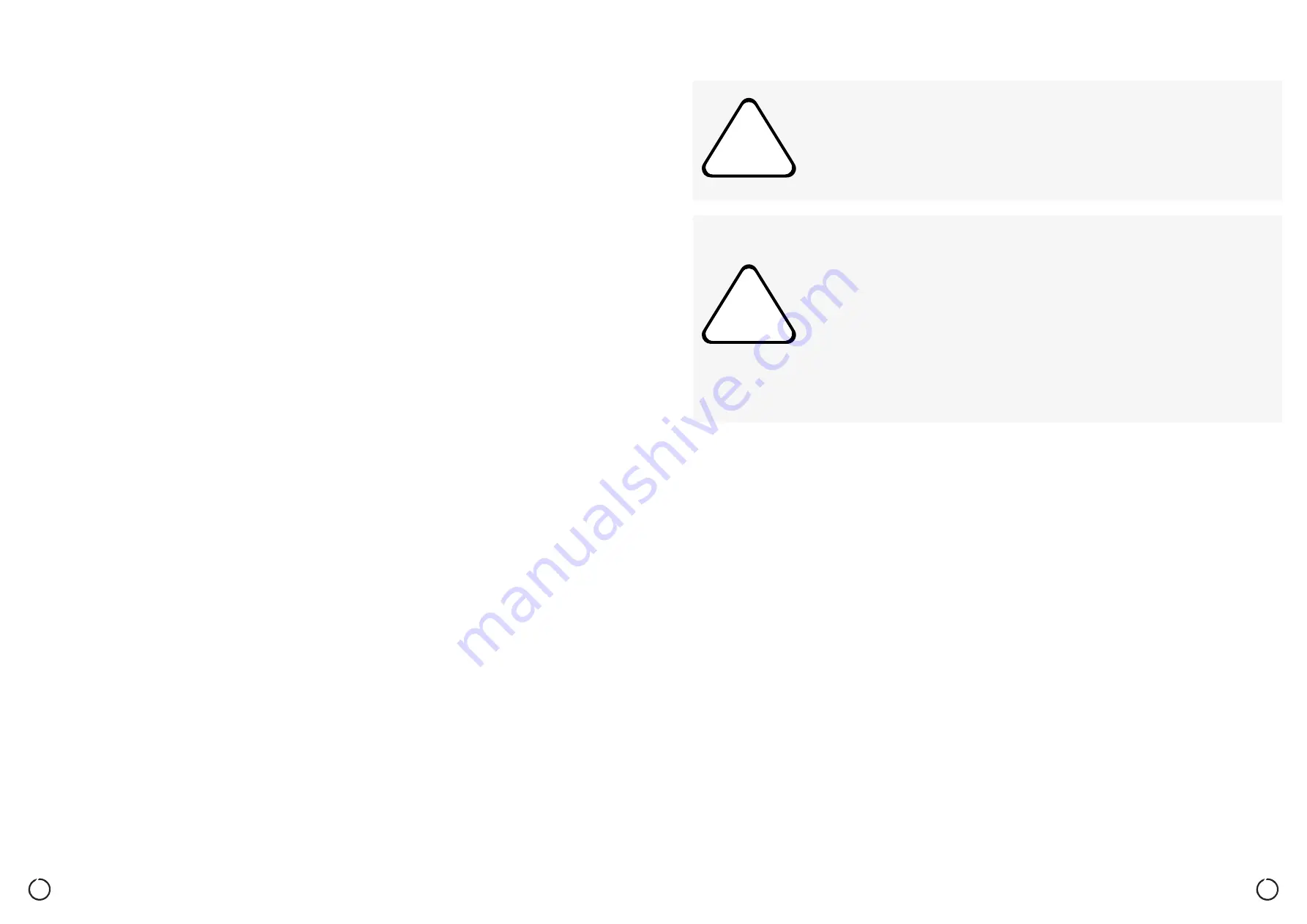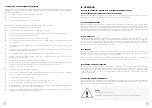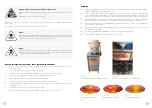
77
76
17.3 DESCRIPTION OF MAINTENANCE ACTIVITIES
17.3.1 OIL CHANGE IN THE HYDRAULIC SYSTEM
Drain the oil by unscrewing the plug on the bottom edge of the hydraulic tank.
When changing the oil, observe maximum cleanliness. Fill the new oil through a filter with an efficiency of 10 µm. The correct
oil level is indicated by the position of the oil mark on the tank. Move the work device a little so that the oil fills the entire
system. Refill the tank again with oil to half the height of the oil mark.
To extend the service life of the loader units, take a sample of the hydraulic oil in the amount of 0.5 litres every 500 OH.
Take the sample into a clean glass container when the oil is heated to approx. 50 °C. If the removed oil is thickened
and dirty compared to new oil, it must be changed or the change intervals shortened. Use only oil specified in the machine’s
operating and maintenance instructions! When changing hydraulic oil, always replace the hydraulic oil filter as well.
17.3.2 MAINTENANCE OF HYDRAULIC CYLINDERS
Make sure that in operation, the bearings of the cylinder attachment lugs are sufficiently lubricated and the wiper ring
on the cylinder cap wipes dirt from the piston rod over the entire stroke range. In the event of a leak, it must be replaced
to prevent damage to the sleeve and subsequent oil leakage around the piston rod.
17.3.3 CHECKING AND INFLATING TYRES
In operation, regularly monitor the condition (wear, air pressure) of tyres. Replace a damaged tyre in time. When inflating,
proceed carefully, observe the prescribed pressure value, and use only a calibrated manometer to check the pressure.
17.3.4 CHECKING AND TIGHTENING NUTS
Check tightening of the wheel nuts according to the machine inspection and maintenance schedule. The tightening torque
is 260 Nm.
17.3.5 CHANGING OIL IN GEARBOXES
1. Turn on the machine and make a trip to warm up the oil. After a short drive, the oil temperature will rise. Take a few
round trips or take a short trip out of town. Once the oil is warmed up enough, it will be less viscous and much easier
to drain.
2. Make sure the machine is on a level and paved surface. Raise the machine with the jack so that the wheels are above
the ground, and remove the wheels.
3. Locate the drain plug found in the gearbox bottom.
4. Remove the drain plug and allow oil to drain into the prepared container. 3-4 minutes should be enough to completely
drain the used oil. Repeat the procedure for the other gearboxes as well.
5. Check that the drain plug is not damaged and screw it back on securely. Be careful not to tighten it too excessively.
6. Now you can refill with new oil. Release the filler cap found on the top of the gearbox and fill with oil using a funnel.
To reach the required level, 1.8 litres of oil are required. Tighten the cap correctly and firmly. Repeat the procedure
for the other gearboxes as well.
7. Mount the wheels. Before lowering the jacks, check that there are no stains of leaked oil under the machine. Carefully
lower the machine to the ground.
8. Finally, dispose of the used oil properly. Use any container that can be closed tight and take the used oil to a designat-
ed place, collection point or landfill.
!
!
17.3.6 MAINTENANCE OF THE LOADER’S ELECTRICAL EQUIPMENT
Warning
For the proper functioning of the entire electrical equipment, properly charged and maintained
batteries are the most important factor.
Maintain the correct electrolyte level by topping up with distilled water each time you charge.
Warning
At the end of work or a drive, and always when the loader will not be used for a longer period
of time, disconnect the battery by disengaging the battery connector. The batteries also must be
disconnected during repairs or when replacing parts of the electrical equipment. This will pre-
vent a short circuit in the power line during the installation works. Battery maintenance includes
cleaning the terminals, topping up with distilled water, and recharging. At lower air temperatures,
keep the batteries sufficiently charged, as otherwise they are not frost-resistant and may freeze.
If you do not use the battery for a longer period of time, you must recharge and carry out mainte-
nance for it after 4 to 6 weeks. Clean the battery terminals of deposits with hot water and lubricate
them lightly with grease. The service life of batteries lasts longer the more often they operate, i.e.
are alternately charged and discharged.
Содержание Elise900
Страница 1: ...Elise900 User Manual for Operation and Maintenance ...
Страница 2: ...KOVACO Electric a s 1st edition 2020 ...
Страница 44: ...Elise900 Manual for the Kovaco Application ...
Страница 50: ...NOTES NOTES ...
Страница 51: ...COPYRIGHT KOVACO Electric a s All rights reserved ...



























